Kintsugi
description: a Japanese art form where broken ceramics are repaired with lacquer mixed with precious metals
16 results

Fewer, Better Things: The Hidden Wisdom of Objects
by
Glenn Adamson
Published 6 Aug 2018
C., here Great Depression, here grief, expressions of, here, here Grutza, Wilhelm, here Gulliver’s Travels (Swift), here Guth, Christine, here Guyton, Tyree, here habits of mind, here Halbwachs, Maurice, here, here hammer example, here hands, touch of, here hands on, being, here handwriting, here Harley-Davidson, here Heatherwick, Thomas, here Heidegger, Martin, here Heidelberg Project, here Heraclitus, here Hibbert, Katharine, here, here The History of Philosophy, Without Any Gaps (podcast), here Hitchhiker’s Guide to the Galaxy (Adams), here homelessness, here Hory, Elmyr de, here hugs, here Hutchings, Ian, here, here, here Hyde, Lewis, here hydroforming, here identity, here, here illness, here Important Intangible Cultural Properties, here improvisation, here index, here industrial revolution, here injection molding, here, here ink splotch, here, here intelligence emotional, here material. see material intelligence Internet, here, here invention, here investment, emotional, here Iron Triangle, here Ive, Jonathan, here Jackson, John L., Jr., here Jackson, Maggie, here Jackson, Michael, here Jacquard, Joseph Marie, here, here Jacquard loom, here jail crafts, here Japan chanoyu (tea ceremony), here, here kintsugi method, here, here, here, here living national treasures program, here Onta ceramics, here POW camps, here Jefferson, Thomas, here Jews, historical documents of the, here Jiro Dreams of Sushi (film), here Ju/’hoansi hunting sandals, here Kandinsky, Wassily, here, here Kazam! machine, here Keller, Helen, here, here Kennedy, A. L., here kintsugi, here, here, here, here Kirkaldy, David, here, here, here Kirkaldy Testing Museum, here Kirkham, Pat, here knowledge artisanal, here attaining by copying, here creating a body of, here crowdsourcing, here embodied, here generational, in tools, here objects and, here speed of acquisition, here Koestenbaum, Wayne, here Koetsu, Hon’ami, here Kwakiutl, here labor, skilled, here labor force, here Lamu Island, here, here Landis, Mark, here language, haptic metaphors in, here laser cutters, here Leach, Bernard, here learning by doing, here, here, here Lessing, Doris, here Library of Congress, here light-emitting diodes (LEDs), here limestone, here linoleum, here listening, here living national treasures, here, here locale, here localism, here longing, here On Longing (Stewart), here looms, here The Lost Carving (Esterly), here Louvre, here machines cultural emphasis on, here design and construction of, here manufacture by, here Mad Men (TV), here Madonna of the Veil (Botticelli), here Magic Marker, here Mailfert, André, here Make Do and Mend, here maker-material relationship, here making automated forms of, here communities of respect, here consciousness in, here continuum of, here copies, here experiential dimension of, here hands on, being, here immersion in, here learning by doing, here music, here to order, here prototyping, here tools and, here vanishing skills, here manhole covers, here mannequins, here markers, felt-tipped, here marquetry, here Mars, simulating, here, here The Martian (film), here material awareness, here material engagement, trend away from, here material experience, here, here material intelligence defining humans, here emotional intelligence and, here intuitive, example of, here lessening of, here in making, here mass gatherings of, here place-specific, here tactility and, here of tools, here totality of, here touch in applying, here materiality agency vs., here fascinations of, here museums organized around, here philosopher of, here philosophy of, here materials.
…
In many cases this will involve replacing the original material with a visual double—tinted epoxy for porcelain, a light-colored wood dyed to match mahogany. This requires tremendous sensitivity to both the original fabric of the object and the replacement material. Not all repairers wish to make their work invisible. The Japanese technique of kintsugi (literally, “golden joining”) is a celebrated example. When a valuable ceramic object has a break or chip, it is filled with clear lacquer mixed with metallic powder. Once this infill has been burnished it gleams brightly, drawing attention to the repair and hence to the life story of the object.
…
Because Japanese pottery is so revered for its historical associations, marking a crack in this way can even enhance the appeal and cultural stature of a particular teabowl or jar. The juxtaposition of luxurious gold against humble clay speaks to the unusual situation of these pots, which often originate from anonymous country kilns but are taken up as revered treasures by wealthy aesthetes. In the case of kintsugi, material transposition is not meant to pass unnoticed, but to speak clearly and eloquently.5 The technique of gold repair has become so iconic among designers that many have adapted it using other materials; a reasonable facsimile can be produced with materials from a hobby shop, like rubber cement and gold metallic paint.
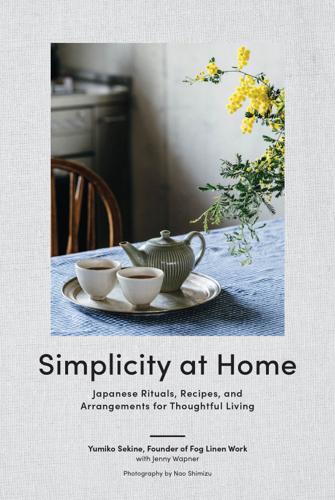
Simplicity at Home
by
Yumiko Sekine
Published 14 May 2020
My mother collects dishes, coordinating them with her table linens to make each meal look festive. And though she must have been sad to see the dishes broken, she would gather the pieces and give them a new life with kintsugi. With this traditional method of repairing ceramics, the broken pieces are joined with urushi lacquer, which is painted with a gold powder paste after it dries. Kintsugi is more than a way to mend a broken dish; it transforms the dish into a piece of art. With the gold line marking the repaired seam, each dish is unique. Kintsugi is a perfect expression of the Japanese concept of wabi-sabi, which is about finding beauty in imperfection, particularly the inevitable process of age and decay.
…
Chronicle Books LLC 680 Second Street San Francisco, California 94107 www.chroniclebooks.com CONTENTS My Life with Linen 10 Summer 20 Creating a New Home 24 Starting to Fill the Shelves 28 Summer Bed Linens 35 Recycling Old Linen Sheets 42 Setting the Table with Handmade Ceramics 46 Cold Noodles with Two Types of Tempura 54 Okra and Kabocha Tempura 58 Somen 59 Corn and Edamame Kakiage (Mixed Vegetable Tempura) 60 The Art of Kintsugi 64 Autumn 68 A Simple Patchwork 72 Patchwork Linen 80 Creating a Small Oasis 82 Air-Drying Vegetables 88 New Harvest Rice 100 Hand-Carved Wooden Spoon 110 Japanese Bath 118 Lavender Bath Salts 123 Yuzu Bath Salts 123 Handmade Soap 124 Winter 126 Preparing the House for Winter 130 Organizing the Closet 138 Decorating for Christmas 144 Growing Plants from Seeds and Scraps 148 New Year’s Party Foods 154 Cleaning the House for the New Year 162 Making Miso 168 Spring 172 A Capsule Wardrobe 176 Making a Scarf 180 Dyeing Old Clothes 186 Spring Arrangements 190 Teatime 200 Ohanami 210 Pickled Cherry Blossoms 214 Resources 220 Thank-Yous 223 My Life with Linen Several years ago, my friend Stephanie came to Tokyo from New York and stayed at our house for a few days.
…
Drying the bamboo colanders after cooking. Bamboo colanders are made all over Japan. Each region makes a slightly different style, and it’s fun to seek out different weaves and shapes to create a unique and diverse collection. An informal happy hour spread with cold beer and fried fava beans, called soramame. The Art of Kintsugi How to Mend Broken Ceramics and Embrace the Beauty of Imperfection It is always sad when you break a favorite ceramic bowl or glass—especially when it’s a family heirloom, a favorite find from a craft market, or a piece discovered on a special adventure. Many of them carry fond memories of past meals and travels.
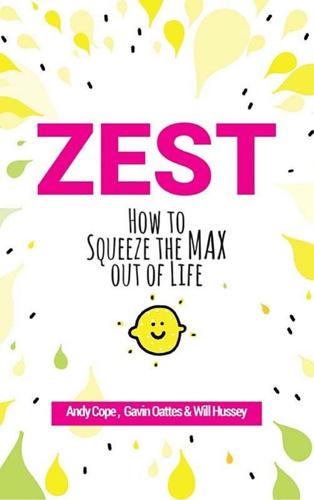
Zest: How to Squeeze the Max Out of Life
by
Andy Cope
,
Gavin Oattes
and
Will Hussey
Published 19 Jul 2019
When a pot/vase/plate gets smashed they glue it back together with lacquer mixed with powdered gold. So instead of hiding the cracks, Kintsugi emphasizes them. In fact it positively celebrates the cracks. The pot, with all its pieces glued together with goldness, is deemed more beautiful than the original. Pots are one thing, but can you imagine if we applied the art of Kintsugi to people? Or, indeed, to yourself? Celebrating our imperfections as a thing of beauty would be a game changer. Kintsugi, as a philosophy, treats breakage and repair as part of the history of an object, rather than something to hide. It’s very similar to the easier to pronounce Japanese concept of wabi-sabi which Richard Powell describes thus: ‘Wabi-sabi nurtures all that is authentic by acknowledging three simple realities: nothing lasts, nothing is finished, and nothing is perfect.’1 Go on, say it: wabi-sabi.
…
In another sentence never before written, we’re asking you to be the best little row of potatoes you can be. Embrace Your Inner Kintsugi There’s a Latin expression Materiam superabat opus: ‘the workmanship was better than the material.’ Once you’ve mulled it over you find it’s easily applied to life. The material we’ve been given − genetically, emotionally, financially − that’s where we begin. We don’t control that. We do control what we do with it. While it may be true that you can’t make a silk purse out of a sow’s ear, you can craft a great life from not very much. Here’s something bordering on profound. All the way from Japan we bring you Kintsugi, the art of restoring pottery. Except the Japanese don’t do it like we do it.
…
Cultivate Optimism and Hope 2. Shake Your Ass 3. Invest in Relationships 4. Strip Down 5. Counting Sheep 6. Your Daily Daley 7. Get Committed to Commitment The Shining Path Part 9 Mort to Life Shape Up You Are Enough Embrace Your ‘Ordinary Magic’ It’s Okay to Be a Sidekick Embrace Your Inner Kintsugi Forgiveness Plenty of the F-Word Shine from the Inside Out And Breeeeeathe … Now and Then Dem Bones, Dem Bones Bouncebackability Dozen Part 10 H4[No]R Part 11 They Think It’s All Over Dead or Alive? Who Wants to Live Forever? Grey Matter Matters Life: You’re ‘It’ Acknowledgements The writing team Index End User License Agreement List of Illustrations Part 5 Figure 5.1 The Happiness Pie.
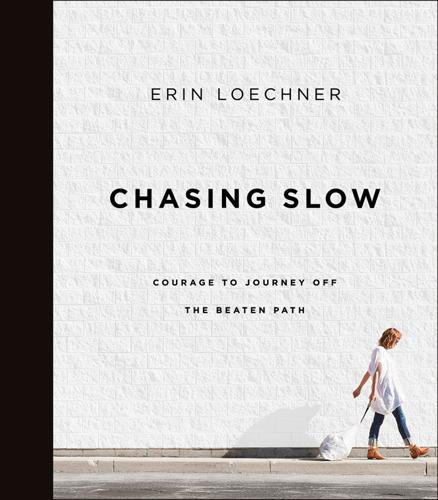
Chasing Slow: Courage to Journey Off the Beaten Path
by
Erin Loechner
Published 10 Jan 2017
My friend Mai once told me about kintsugi, a Japanese tradition in which broken pottery is repaired with a metallic-infused lacquer. Kintsugi means “to patch with gold”; in this technique, the potter mends a bowl in delicate, sweeping strokes, taking no care to hide the crack. There are no clear coats, there is no blending, there is no attempt at concealing what has occurred. Instead, the crack is illuminated with gold, with respect, with observance. And then it is pieced together—not to be made new but to be changed. The break itself is the beauty. The crack is worthy of gold. Can you imagine? Kintsugi celebrates failure in a way I am still learning to do, in a way I am only beginning to understand.
…
We applaud women for making a speedy return to prepregnancy jeans after giving birth. We cover evidence of teenage acne with a thirty-four-dollar BB cream. We have become expert under-the-rug sweepers, in marriage and in work, in parenting and in life. Under-the-rug sweeping is the default. I once asked my friend what the secret to kintsugi is. Is it the brush? The application? The adhesive, the gold? “Nah,” she said. “It’s just time. When my uncle does it, it can take, like, two months.” I hate the answer time. Time, historically, has not been on my side. We are meant to keep an eye on it. For how long? While living in this deep season of subtraction, it occurs to me that I have not fully seen it as subtraction.
…
But I did, and although Ken’s father would be dead by 9:00 a.m. the next morning, burgers or not, it seemed the right thing to do. And this is what I think of when I think of time. I think of sprouting tomato plants and dying fathers-in-law, and I think of the small choices we make daily. I think of how we can choose to kintsugi our circumstance, of how we can choose to amass or not, of how we can choose to speed up or not, of how we can choose to gather burgers on a sad, cold summer holiday. Or not. I have chosen a lot of the right things, and a lot of the wrong ones. I have tried addition—houses and projects and wardrobes and ambitions.
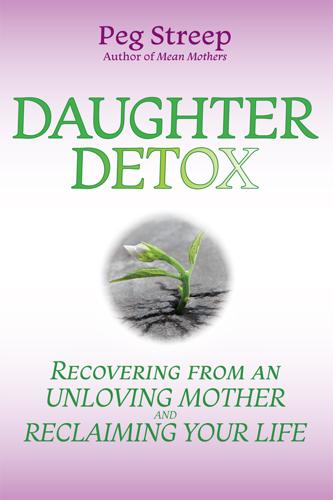
Daughter Detox: Recovering From an Unloving Mother and Reclaiming Your Life
by
Peg Streep
Published 14 May 2017
But perhaps it’s not just about expectations and magical thinking; perhaps the larger problem is how we think of healing and wholeness. That brings me to the Japanese art of kintsugi , which takes a very different view of things that are broken or cracked than we do in the West. When something precious is damaged—whether it’s Rembrandt’s “The Nightwatch,” Michelangelo’s “David,” or a family heirloom—we do what we can to restore it to its former pristine beauty. We want the repairs to be seamless, the cracks or slashes unseen, the object to be fully made whole so that, to all appearances, nothing untoward ever happened to it. Kintsugi takes a very different approach, one which we can apply to healing .
…
It’s said to date from the 15th century when, supposedly, a shogun sent a prized object back to China for repair, and it was returned with staples holding it together. Dissatisfied, the shogun set a challenge for artisans to come up with a more aesthetically pleasing way of repair, and kintsugi was the answer. In time, these repaired objects became venerated because the visibility of their cracks and breaks testified to their history, making them emblems of resilience, the passage of time, the inevitability of change, and the possibility of transformation. It’s the transformative nature of kintsugi that’s so arresting because by flaunting the object’s history, the object becomes more than it was before it was damaged; it becomes a new object that is part of the present but also testifies to its past identity.
…
One of the main goals of the redirect step is to enhance your ability to feel self-compassion and, indeed, to mother yourself. Recover: The final stage involves seeing the healing process as one that is ongoing, and that really incorporating self-acceptance and self-compassion into your life remains a daily task. Using the Japanese art of kintsugi as its primary metaphor, this step requires you to understand healing in a different way and to make peace with the pace of the process. Chapter Ten is devoted to exercises keyed to each of the stages of recovery. You can do them after reading each chapter or at any other time. ABOUT THE EXERCISES IN DAUGHTER DETOX Most of the work involved in reclaiming your life from the effects of a toxic childhood is about bringing unconscious patterns of thinking and feeling to the surface so that they can be changed through consciousness.
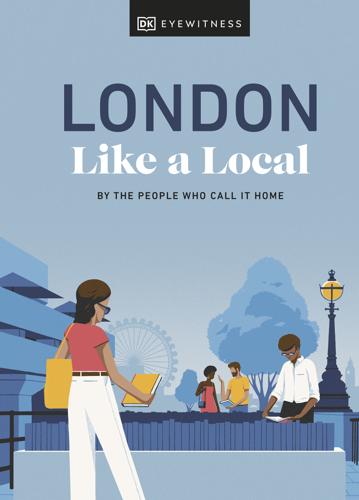
London Like a Local
by
Florence Derrick
Artist Jylle Navarro’s background in fashion and performance inspired her to start these unique art classes, which take place at various locations, including in circus-inspired Trapeze Bar. » Don’t leave without heading down into Trapeze Bar for a drink and acro-balance or contortion performance after your class. Arts & Culture | Get Crafty Kintsugi is the latest Japanese craft to be quietly making itself known among London’s Japanophiles and pottery lovers. Using gold resin to weld together cracks in treasured pieces of crockery, Kintsugi revolves around the idea that the mended product – with its new and beautiful scars – is even more precious than the original item. Check out Indytute for workshop listings (www.indytute.com) g ARTS & CULTURE g Contents A day ambling through arty West London From its roots as an artists’ colony in the 19th century to its heyday as the centre of the Swinging Sixties in the 20th, the borough of Kensington and Chelsea has long been an enviable postcode in the art world.

Key to the City: How Zoning Shapes Our World
by
Sara C. Bronin
Published 30 Sep 2024
The city has already begun piecemeal street improvements, and it has issued bonds for millions in large-scale stormwater infrastructure. City Hall Park has been regraded and landscaped for rain gardens. Hundreds of shrubs now slow and filter stormwater. Public art in the park designed in the Japanese kintsugi style includes stone disks named for tributaries of the Champlain watershed, beckoning parkgoers toward the rain gardens. There is much more to do, but if the city continues to follow the path it has set for itself, the over-paved, under-treed status quo will inevitably change via the proliferation of refreshed streets that are compatible with their natural context and that set the stage for the full range of human activities.
…
See also Chicago immigrant communities, 16, 19, 23, 40, 79, 157, 179, 180 immunity, 145–46, 148, 204 incentives, 51–52, 96, 105, 110–11, 133 inclusionary zoning, 85–87, 88, 105, 171, 195 Indigenous peoples, 129, 132 industrial use oil and gas industry, 16, 73 shipping infrastructure, 64, 158 See also commercial use infill development, 25, 62, 75–76, 182, 183 Inner Harbor, Baltimore, 63–64 Institute of Transportation Engineers (ITE), 96–97 institutional inertia, 10, 148 Interstate 610 (I-610), 72, 75 interstate highway system, 35, 57, 72, 75, 92 Intracoastal Waterway, 152, 157 Iowa, 88, 118, 200 Italianate architecture, 158 Jackson, Alan, 49 Jackson Park, Chicago, 45 Jackson, WY, 88 Jagger, Mick, 37 Japanese kintsugi style art, 144 Jennings, Waylon, 48 Jet magazine, 44 Jewish communities, 17, 55 Jim Crow laws, 39 Johns Hopkins University, 32 Johnson, Philip, 91 Jones Falls, Baltimore, 30, 62–64 Jones, George, 48, 119 Joplin, Janis, 54 “Keep Austin Weird,” 59 Keney, Henry, 115–16 Keney Park Sustainability Project, 115–16 Kentucky, 40 Kinder Institute, Rice University, 180, 181 King, Martin Luther, 3 La Jolla, CA, 167 Lake Champlain, 140, 141, 141 Lake Erie, 117 Lake Michigan, 43 landscaping, 26, 58–59, 102–3, 113, 115, 127, 130–32, 134, 138, 142–44, 150, 170 land use, 1, 6–7, 19, 20–25.
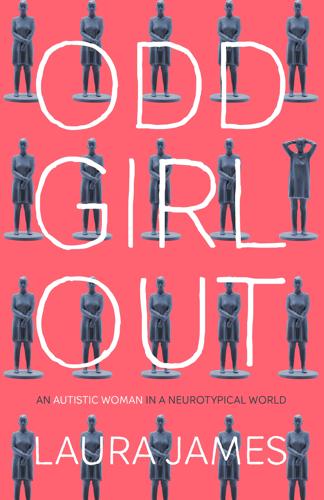
Odd Girl Out: An Autistic Woman in a Neurotypical World
by
Laura James
Published 5 Apr 2017
I’m coming to accept now that there are huge advantages to being autistic – the quickness of my mind, my ability to take in new information, my intelligence, the passion I feel for causes I believe in, my inability to take offence. The list goes on. I think of Kintsugi, the Japanese art of mending broken pottery with powdered precious metals. The craft and the philosophy treat breakages and repairs as part of the history of any piece, rather than something to hide. I am flawed. I am, in part, broken. Not by my autism, but by my insistence on fighting it and by the stresses it places on me. My being different from most people around me – and the years of living a life not meant for me – have taken their toll. I look up pictures of Kintsugi bowls. I see the gold cracks glistening and realize that without them many of the pieces filling the screen on my laptop would be dull and ordinary.

Boston Like a Local
by
Dk Eyewitness
g Home Touches g Contents Google Map CRANE AND TURTLE Map 4; 1 Bow Market, Somerville; ///curry.dame.drums; www.craneandturtle.shop Welcome to the anti-IKEA: not a single item in this serene, silver-walled space is mass-produced. Instead, all the hand-picked home goods, many sourced from Japan, are durable and sustainably made – as well as being uniquely beautiful. We can’t get enough of the delicate porcelain plates and gold-plated silverware. » Don’t leave without signing up for the store’s kintsugi workshop, which is all about the Japanese art of repairing broken pottery. g Home Touches g Contents Google Map SHAKE THE TREE GALLERY Map 1; 67 Salem Street, North End; ///wire.rocket.camp; www.shakethetreeboston.com Three decades ago, Marian Klausner pivoted from practicing law to spotlighting the work of amazing local artisans.

The Day the World Stops Shopping
by
J. B. MacKinnon
Published 14 May 2021
More than a thousand years ago, the Japanese practice of wabi-sabi emerged. The term is difficult to translate, but evokes both thoughtful melancholy and the passage of time—the way you might feel walking among ruins. At its most familiar, wabi-sabi celebrates that which is faded, patinaed, simple, modest. It’s captured most clearly in kintsugi, the five-hundred-year-old craft of repairing, say, a dropped and shattered ceramic bowl, not by concealing the cracks, but by highlighting them with golden or silver lacquer. The result is a luminous tracery that makes the broken object as appealing, or more so, than when it was unblemished. Like almost everything else, the concept has been swallowed up by consumer culture.
…
See Houshi, Sado Island; Toraya; wabi-sabi adversity, overcoming, 260 “agriculture and x,” 270 bubble economy, 96, 182, 259–62, 264 Great Kanto Earthquake, 170 “hyper-aged” society, 262 “Japanese miracle,” 182 Lost Decade, 262 Lost Years, 262 Ogawa-machi, 269–71 Shibuya, 260, 268 3/11, 264 Jevons paradox, 214–215 Jevons, William Stanley, 214, 258 Jewish sabbath, 45–46 Ju|’hoansi, 2–4, 275, 278–83 “affluence without abundance,” 5 “just enough,” state of, 281–82 Kaiser Wilhelm Memorial Church, 73 Kaplan, David, 49 Kasser, Tim, 119–21, 123–24, 127–29, 243–44, 247 Keep It Here Inc., 26 Kennedy, Robert F., 85–86 Keynes, John Maynard, 9, 122, 242, 252, 278. See also “economic problem” Klein, Naomi, 240 Kolkata, India, 229 Kropfeld, Maren Ingrid, 218 Kuhmoinen, 94 Kurokawa, Mitsuharu, 169 Kuznets, Simon, 84–85 Kyba, Christopher, 72–77 kintsugi, 151 kodawari, 265, 270 konbini, 269 kura, 259 kuuru bizu (“cool biz”), 27 Kotler, Philip, 111–12 Kalahari Desert, 1, 3, 14, 275, 278 Labowitz, Sarah, 27 land clearing, studying, 230–31 landfills, 150–51, 167, 289 Larson, Gary, 282 Lateef, Abdul, 189 Law of the Deterioration of Everything, 144 Lawrence, D.H., 50 Laws, Megan, 280, 282, 293 LEDs (light-emitting diodes), 75–76, 147–48 Lee, Michael S.
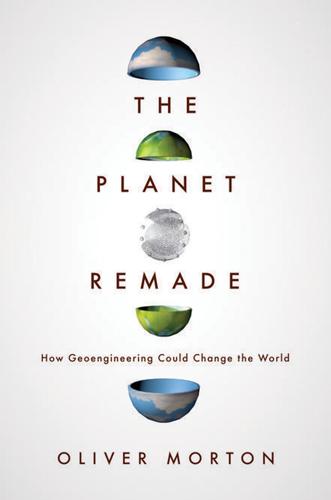
The Planet Remade: How Geoengineering Could Change the World
by
Oliver Morton
Published 26 Sep 2015
Some see a beauty in these new forms of engineering – the grandeur of holding back great sheets of ice and re-routing planet-spanning currents of air thrills them. But they also see them as representations of a greater beauty, felt not seen – the beauty of an earthsystem newly cared for, newly loved. They draw analogies between the sunset-reddening veil and the golden lacquer used to bind together the fragments of broken pots in the Japanese practice of kintsugi – an art that treats its creations as all the more whole, and all the more beautiful, for having been broken and mended. Others see such talk as dangerous poppycock. Despite these arguments, the ‘naturalism schism’ which some had feared would split the Concert has not done so. More or less unavoidably, the world’s view of what is natural has changed.
…
The role of the mammoths is discussed in Doughty, Wolf and Christopher (2010), and I first came across the idea of glacial restraint at a talk by Slawek Tulaczyk at UCSC; both have since seen fictional use in Robinson (2012). I am very grateful to Duncan McClaren for the insight into the relevance of kintsugi; my use of it should not be taken as representing his thinking on the matter. Bibliography Contains books, papers and other documents referred to directly in the text and notes. Abbott, Charles Greeley (1938) The Sun and the Welfare of Man Smithsonian Press Agar, Jon (2013) Science in the 20th Century and Beyond Polity Press Akbari, Hashem, Menon, Surabi and Rosenfeld, Arthur (2008) ‘Global Cooling: Increasing World-Wide Urban Albedos to Offset CO2’ Climatic Change 94 275–286 Alvarez et al. (1980) ‘Extraterrestrial cause for the Cretaceous–Tertiary extinction’ Science 208 1095–1108 Anderson, Kevin and Bows, Alice (2008) ‘Reframing the Climate Change Challenge in Light of Post-2000 Emission Trends’ Phil.
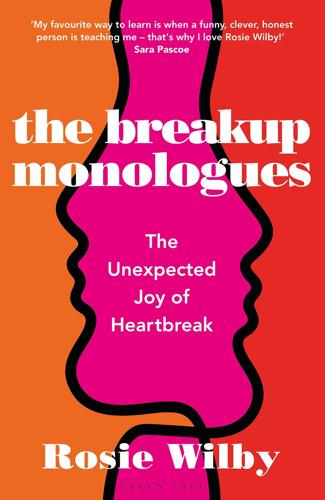
The Breakup Monologues: The Unexpected Joy of Heartbreak
by
Rosie Wilby
Published 26 May 2021
She rolls over drowsily to be almost touching Dog, in closer proximity than she would ever consciously allow. I stealthily take a photo on my phone, a reminder of this heart-warming moment of cuteness. Downstairs, I hear the sound of Girlfriend’s key in the door as she returns panting and hot from her run. ‘I’m home!’ Me too. Conclusion: How Breakups Keep Us Together 1 Kintsugi or Kinsukuroi is the Japanese art of repairing broken pottery with a lacquer mixed with powdered gold. The philosophy treats the breakage and repair as something to highlight rather than to disguise, a valid part of the object’s history. Similarly, our breakups are vital parts of our personal growth, badges to be worn with pride rather than shame.
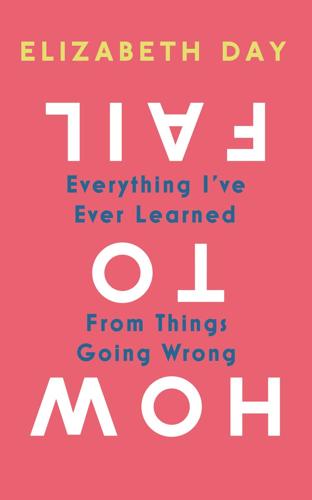
How to Fail: Everything I’ve Ever Learned From Things Going Wrong
by
Elizabeth Day
Published 3 Apr 2019
Now, the scaffolding was being dismantled and all I was left with was rubble and the dust of crushed bricks. I did many of the clichéd things that people do in the aftermath of a break-up. Sometimes clichés are clichés for a reason: because they work. I took baths in the middle of the day. I looked up TED talks on heartbreak. I became familiar with the notion of kintsugi, the Japanese art of putting pieces of broken pottery back together and filling the cracks with lacquered resin and powdered gold. On one particularly desperate occasion, I actually Googled ‘how long does it take to get over someone?’ I ate mostly hummus because cooking for myself seemed too much effort.
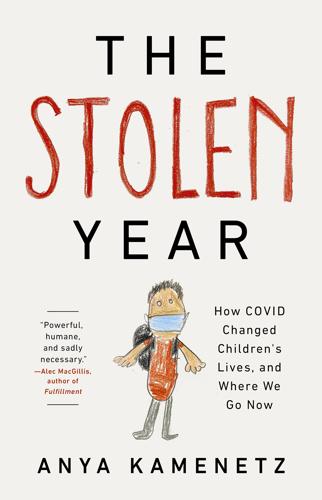
The Stolen Year
by
Anya Kamenetz
Published 23 Aug 2022
If children had the affirmative right to stay with kin, welfare agencies might have to provide families with needed services like housing, income, or drug or mental health counseling. In the current system it’s the families of origin who have the burden of proof and of jumping through hoops to regain their children. This nation could mend the fault lines exposed by this pandemic with a mixture of public and private efforts. The process reminds me of the Japanese art of kintsugi, where cracks in pottery are filled in with lacquer mixed with gold. POST-COVID GROWTH K. Tsianina Lomawaima writes about American Indian boarding schools, another American phenomenon involving children that was both a social catastrophe and a massive injustice. Lomawaima tells me that whenever she gave a public talk, she was faced with diametrically opposed reactions.
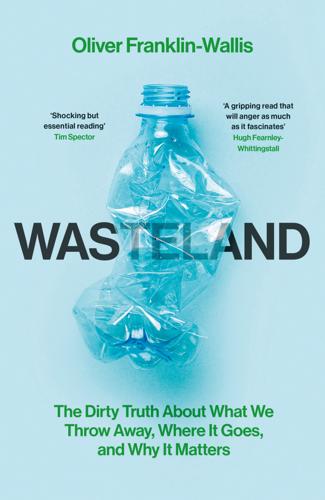
Wasteland: The Dirty Truth About What We Throw Away, Where It Goes, and Why It Matters
by
Oliver Franklin-Wallis
Published 21 Jun 2023
So, with patient tutelage from my mother-in-law Joanne, I learn to understand the difference between a running and a blanket stitch, affixing patches to worn elbows and ripped knees. I am, and this is an understatement, not a natural. I often find myself pinpricked and irritable, but it’s rewarding work, inducing periods of slow and intense concentration. The threads I use are in bright colours, oranges and yellows, inspired by the Japanese art of Kintsugi – in which broken pottery is repaired with gold, to show the beauty of both damage and repair.I I find it strangely moving. I set out to fix things more: broken toys, house fixtures, a coffee machine which has lingered for months with an internal leak that I take to with a screwdriver before seeking professional help, once it’s obvious I’m way out of my depth.

Bill Marriott: Success Is Never Final--His Life and the Decisions That Built a Hotel Empire
by
Dale van Atta
Published 14 Aug 2019
The last photo taken of the four Marriott siblings (left to right): David, Stephen, John, and Debbie. Photo © Gale Frank-Adise Elder Jeffrey R. Holland, one of the Church’s Twelve Apostles, was the concluding speaker. He talked about the privilege of knowing Stephen at BYU. The debilitating illness, Holland said, reminded him of the ancient Japanese practice of kintsugi, repairing cracks in precious porcelain objects with adhesive pure gold. “They enhanced the broken object, which thus became more beautiful and more valuable because of the damage it had experienced. None of us would have had Stephen face what he experienced from such an early age—its terrible, terrible effect.